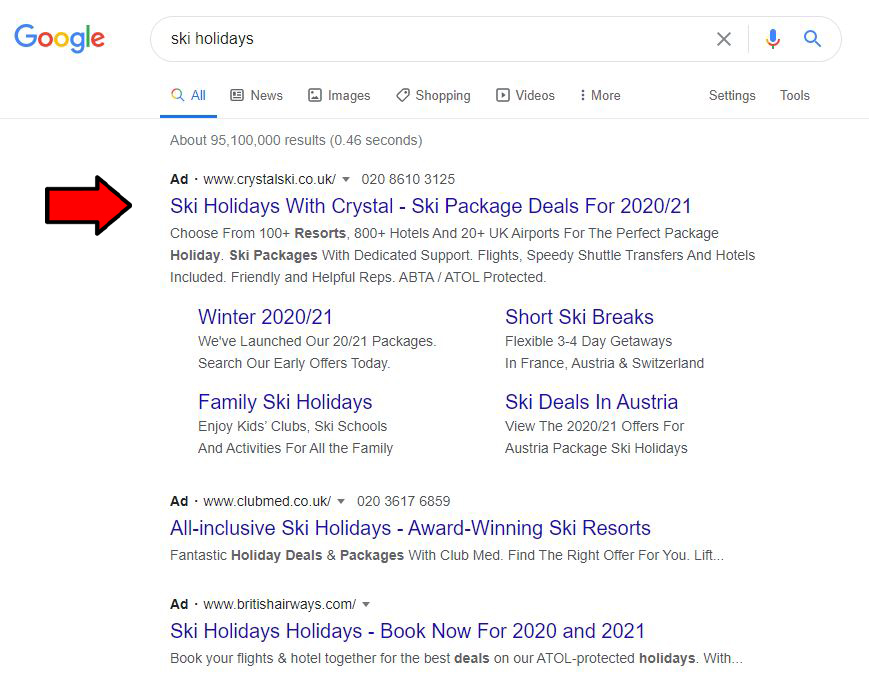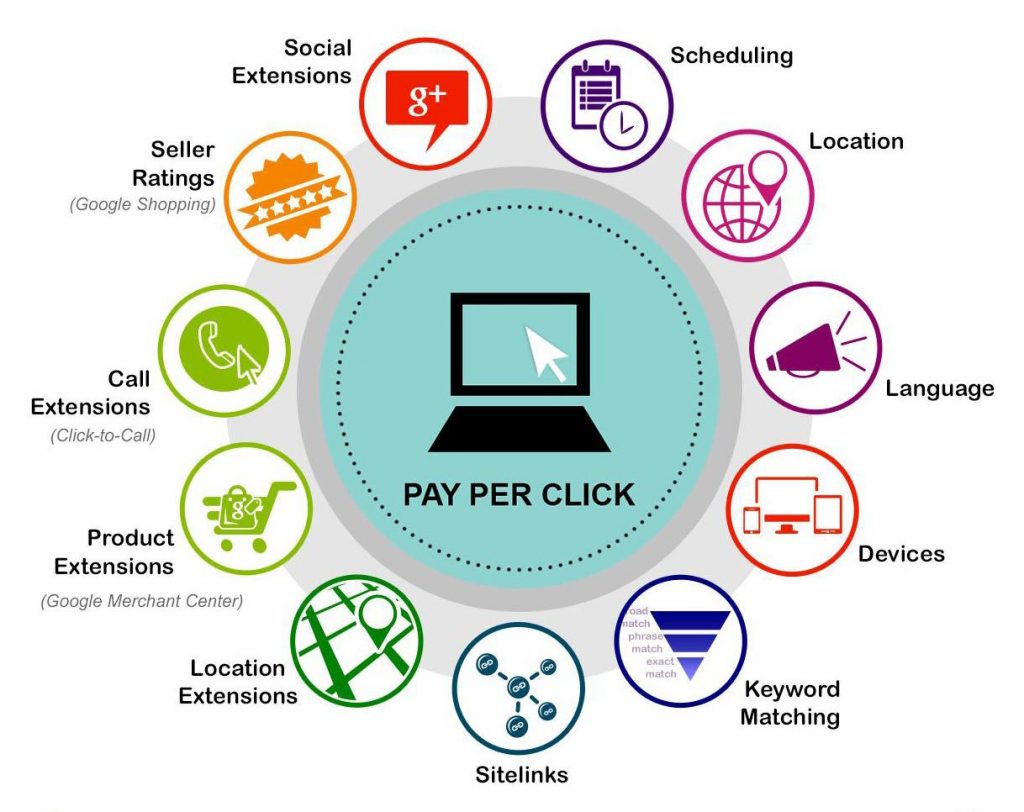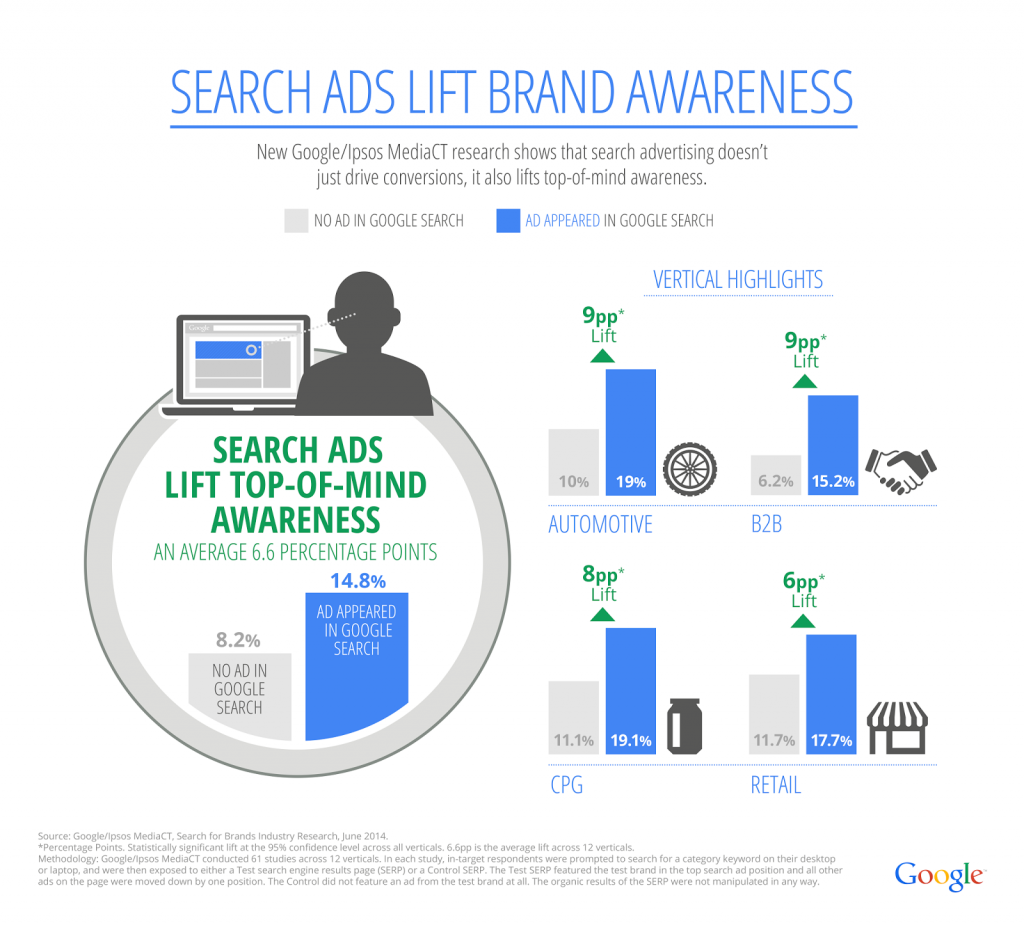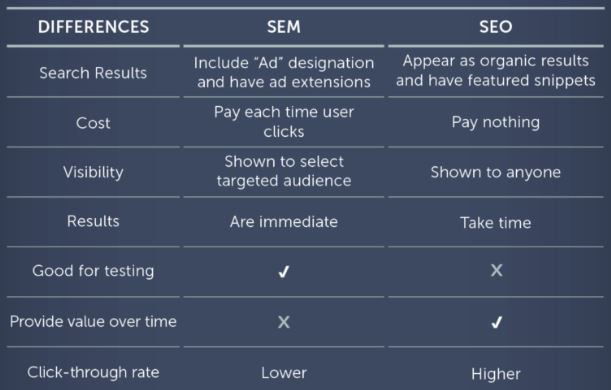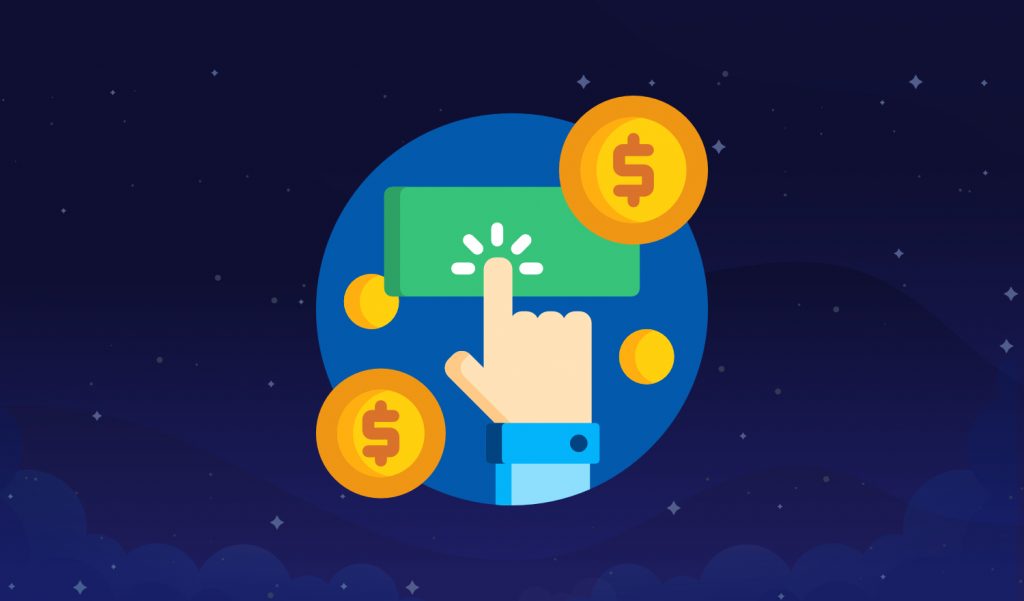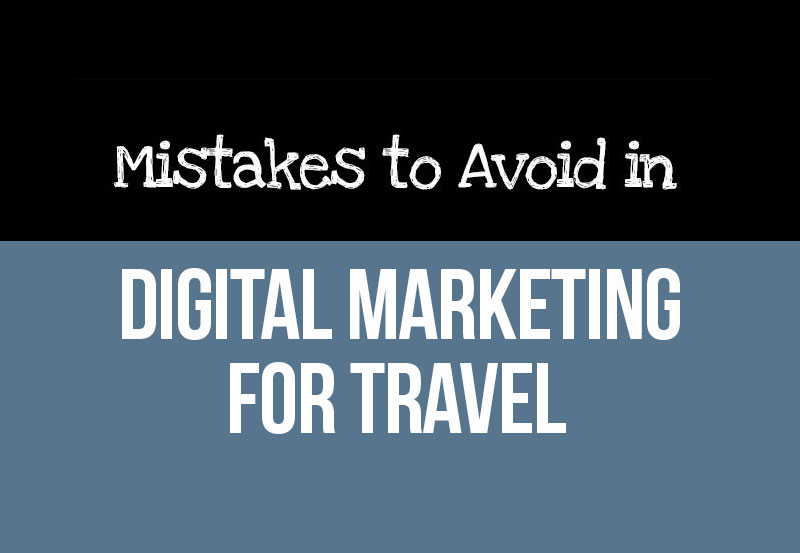What Is SEM And Why Is It Necessary For Travel Companies
Search Engine Marketing (typically abbreviated to SEM) is the process of gaining website traffic by purchasing ads on search engines.
Previously the term encompassed SEO and paid search activities but more recently there is a key distinction between the two areas.
The Difference Between SEM and SEO
There are two major categories within search marketing:
- SEM uses PAID strategies to appear in search
- SEO uses ORGANIC strategies to appear in search
SEO involves optimising your website in various ways with the aim of boosting free/organic traffic from search engines.
An optimised site is more quickly understood by Search Engine crawlers and has keywords and content relevant to the user, thereby increasing its chances of ranking higher.
SEM is a much faster process, in terms of choosing keywords that you want to be found for and paying money to appear on the page.
Sounds good?
The only catch is that the most popular search terms will come with the highest price tag.
‘Paid search’ or ‘paid listings’ pretty much means paying to have your website show up at the top or side of the page when someone searches for a specific term in Google.
Some of the most common terms used in reference to SEM activities include:
- Paid search ads
- PPC (pay-per-click)
- CPC (cost-per-click)
- CPM (cost-per-thousand impressions)
The majority of search ads are sold on a PPC or CPC basis, with very few advertising options being sold on a CPM basis.
You can get PPC ads on the major search marketing platforms:
- Google Adwords
- Bing Ads
- Yahoo Search Ads
Each platform offers its own guides to use and CPC prices vary (and change regularly).
There are several types of ads you can create depending on your budget, goals, audience, etc.
These include:
- AdWords (Google’s online PPC) and Bing (Microsoft’s online PPC)
- Display Ads – Banners at the top, side or footer of search results
- Re-targeting Ads – Which are ads displayed on other websites based on a user’s recent searches
- Call Tracking – Ads targeted at those who have called a specific number, generally displayed on a search ad. This is mostly relevant to mobile searches.
Google is responsible for just under 90% of all internet searches and gets an estimated two trillion searches per day.
Over 50% of which is coming from mobile devices.
Have you ever looked up a holiday, trip or adventure on the miserable commute to work? Well, so has everyone else!
Why is SEM Important for Travel Companies?
The primary reason is that ads appear first in search engine results.
Having paid search ads gives you a good chance of being at the top of the search engine results page (SERPs) as long as your keyword bid and quality score are both high enough.
If you’ve got an online presence and/or have done any work around SEO, you’ll know that if you’re not on the first page of search results, the chances of anyone clicking through to your page are virtually zero.
In fact, any lower than position five or six and the click-through rate drops below five percent.
Valuable Traffic
Regardless of your industry, product or service, SEM traffic is considered the most valuable source of traffic because it is targeted.
Users that arrive at your page via SEM haven’t got there by mistake, they were searching for what you’re selling (as long as you’re not bidding on irrelevant words and phrases – It’s important to check there isn’t wastage).
SEM allows you to create a custom audience refined by specific demographics – for example gender, age, location and hundreds more.
Because the traffic is targeted, the chances of these users converting once they get to your site is significantly higher.
If visitors have clicked on your web page from search results when Googling a destination, or clicking on an ad for one of your excursions, they are more likely to undertake a required action – whether that’s booking a trip, signing up for your deals or calling your team.
Worthwhile Investment
You’ve heard the phrase “You have to spend money to make money”.
This rings true for SEM.
Businesses make an average of £2 in revenue for every £1 they spend on AdWords.
Anyone who has ever run a marketing campaign will know that whilst possible, this level of return is not a given, and you need to know what you’re doing to achieve these results.
Equally, the site/content that the users reach at the end of the ad journey needs to be high quality and relevant.
SEM will offer your business the potential to make more money from your marketing campaigns and amplify your efforts, but won’t guarantee sales.
However, it is also a great way to start conversations. 52% of online shoppers who interact with PPC Ads follow their browsing with a call to the company whose advert was displayed.
The good news is that it won’t break the bank and needn’t cost you the world. It doesn’t take much to advertise on search engines as there is no minimum amount.
As little as £5 will get you up and running with ads if you’re on a tight budget.
Exposure and Sales
Google display campaigns reach 78% of global internet users.
This level of outreach and audience penetration has the ability to increase sign ups and sales exponentially.
The travel market is relatively saturated, with more independent travel sites springing up every day and search comparisons bringing others to the foreground.
SEM is a great way to cut through the noise and at the very least get your name heard.
According to Google, search ads can increase brand awareness:
Even if your ad doesn’t get clicked on, your brand will still be visible on the top of the fold and users will likely still read and later recognise the brand name or URL.
When setting up your SEM campaign, it’s important to decide what the desired outcome is – whether it’s to boost sales on a particular trip or just to gain brand recognition and awareness.
Money-making will typically be the primary focus of marketing campaigns but other types of conversions shouldn’t be ignored.
Website subscriptions, newsletter signups or even just regular readers are all valuable and will likely lead to a sale further down the marketing funnel and timeline.
Footfall
Its’ not just about getting your travel brand out there on a national scale though.
If you’ve got a physical store then SEM can be the perfect support mechanism.
Localised SEM ads give businesses a great head start in terms of generating actual footfall to local stores.
Local marketing connects regional businesses with the surrounding community by serving up relevant ads when individuals type in things like ‘tour operator near me’ or ‘best travel agency in Town X’.
Google released an advertising package called Local 3-Pack gives local ads the top three positions in search results for location-based search terms like those mentioned earlier.
Three quarters of those who find local business information online will follow up with a physical store visit within 24 to 48 hours.
SEM vs. SEO
SEO is a long-game marketing strategy and can take anywhere from a few weeks to a few months to start seeing the results of your efforts.
The results generated by SEM are almost immediate and also tend to fluctuate less than other SEO tactics, meaning consistent traffic until your ads are removed.
SEM search placements include an ‘Ad’ designation. SEO does not.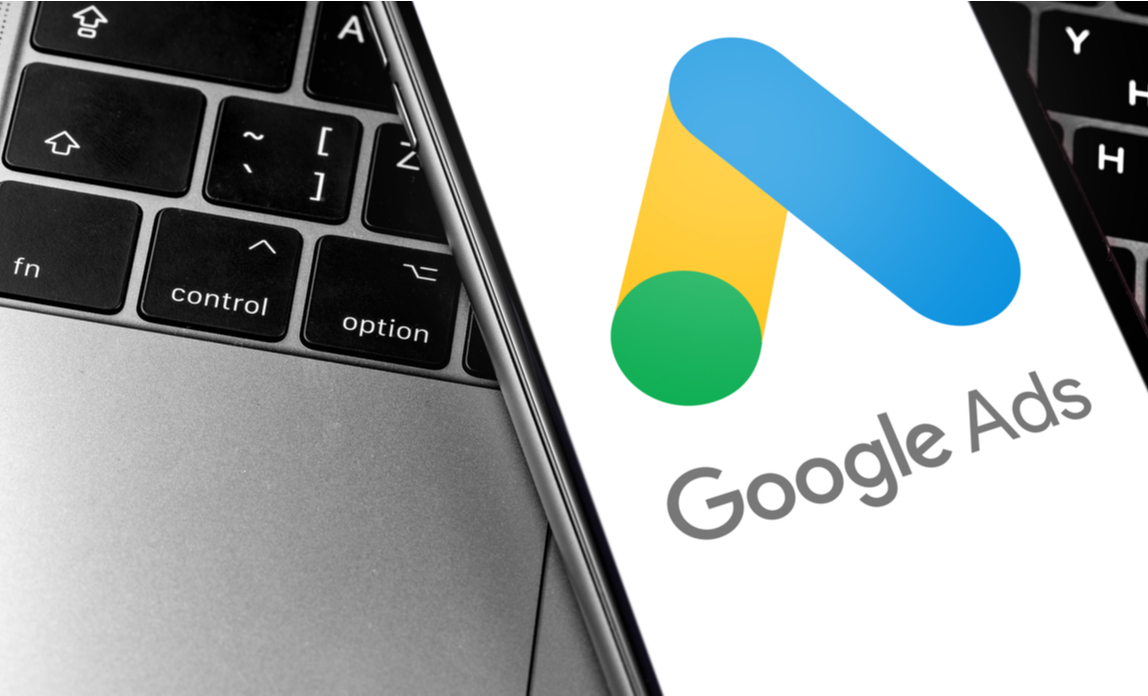
Once you’ve identified your goals and keywords to target, ads only take a few minutes to create.
Once they’ve gone through the required approval process, they appear in the SERPs within one day and traffic will start rolling in soon after.
There are a wide range of differences in the two mediums:
The other issue with using only SEO is that you have no way of knowing what other competitors are doing.
So you can do all the optimisation you want, but if they’re making valuable changes, they might still come in above you on search rankings.
SEM delivers insights into your competitors by allowing you to check your competition’s ads and comparing their targeted keywords with your own.
Using this, you can tweak your own efforts and increase the effectiveness of your marketing campaign. If executed effectively, you could actually rank higher than your competitors for the same terms.
The abundance of competitive analysis tools can help you track the use and movement of keywords and then use this analysis and insight to improve your wider marketing campaigns and drive even more traffic.
Top Tips for Your SEM Campaigns
Explosion in mobile search
Just like you will need a mobile-responsive website to make sure people can browse and book trips and tours on the go, consider what keywords and targeting criteria you are bidding on.
Nearly 80% of people prefer to self-serve to get the information that they need in terms of travel.
According to Google Consumer Insights 2018, 47% of users in the UK, USA and Australia/NZ are comfortable researching, booking and planning their entire trip on a mobile device. This is not just for hotels and flights either.
Travelers frequently use their mobile devices to research activities or attractions, and locate nearby areas of interest including shopping destinations and restaurants.
Do your research and make the most of Google’s Keyword Tool
In the travel sphere, long-tail keywords (three or more search words) are less competitive to rank for and also move up higher in search rankings.
Almost 60% of searches are long-tail keywords, so bear this in mind when bidding on keywords and phrases. If you’ve got a sale going on, use SEM to get the word out.
Recent research showed that more than 60% of U.S. travellers would consider an impulse trip based on a good hotel or flight deal.
Analyse and refine
On-going maintenance and optimistion is a key part of running SEM campaigns.
From the second your ads are launched the potential to continually boost clicks and sales is very real. SEM campaigns should be constantly re-visited and optimised for long-term results.
By analysing the data and results from your PPC search campaigns, you’ll notice patterns in search terms, conversions, which ads received the most clicks, and the you can run A/B testing on what type of ad works best with your target travel audience.
Unlike in times gone by, where you paid thousands of pounds to print an advert in a magazine or on a billboard in the city, SEM gives you the flexibility to chop and change your ad as many times as you like.
Apply your findings to your wider marketing techniques
Understanding location and industry keywords provides unique insight about what your customer is looking for and this knowledge can help inform your other marketing channels.
By analysing traffic data, you can discover users’ search intent.
What Should You be Aiming For?
Whether you’re doing PPC for the first time or you’ve been running ads for a while, it can be hard to know whether your results are matching up to your competitors and the wider industry.
So what numbers should you be looking to ensure you’re on par with other travel agencies and operators?
Below are some benchmark averages, using data harvested from across the web in 2018.
| Travel industry | Across all industries | |
| Average click-through-rate | 4.68% | 3.17% |
| Average cost-per-click | $1.53 | $2.69 |
| Average conversion rate | 3.55% | 3.75% |
| Average cost-per-action | $44.73 | $48.96 |
It’s reassuring to see that the click through rate is higher an cost per click lower for travel than most other industries, most likely because people searching for a particular trip or tour have a genuine intent related to that term or keyword.
To find out more about the click through and conversion rates and bidding averages, take a look at the Google Adwords Industry Benchmarks report here.
As you can see, SEM can play a major part in the success of any website, and thus any business and its sales. However, it shouldn’t become a siloed marketing technique – creating good content with quality keywords, social media outreach and interaction and a great user experience online are equally important.
Although the relevancy of displayed we sites and ads makes SEM traffic more valuable than other sources, SEM should be used as a complimentary technique but not a fix-it solution.
Generally speaking, organic search results are more trusted than paid ads and consumers still want great deals, differentiation and a compelling narrative.
At least 39% of traffic to travel websites comes from organic Google searches, so always make sure you’re using a mix of SEO and SEM and you can’t go too far wrong!
By continuing to use the site, you agree to the use of cookies. more information
The cookie settings on this website are set to "allow cookies" to give you the best browsing experience possible. If you continue to use this website without changing your cookie settings or you click "Accept" below then you are consenting to this.

